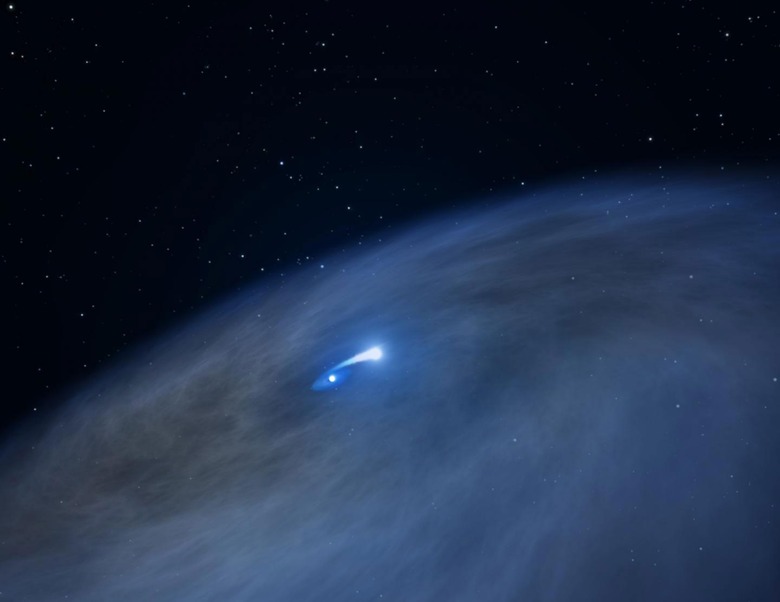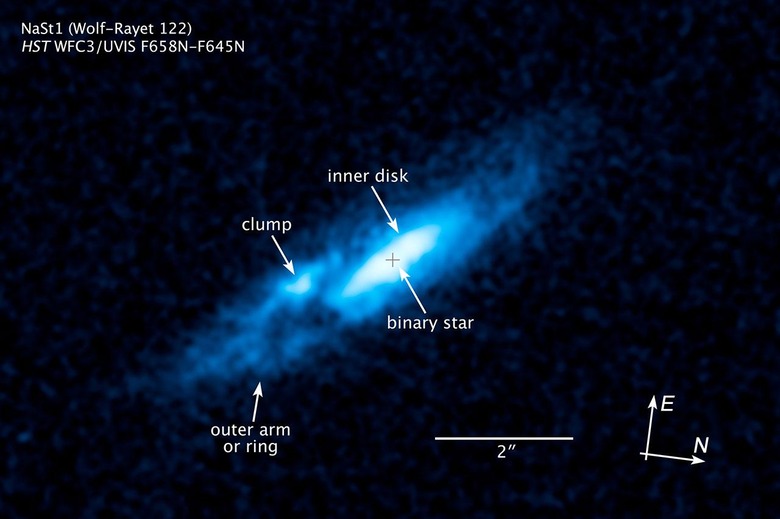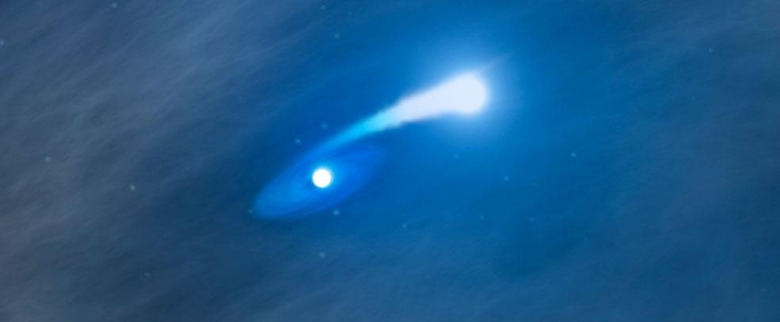NaSt1 "Nasty" star blasts gas disk in death display
NASA and the Goddard Space Flight Center use the Hubble Space Telescope to watch the Wolf-Rayet star NaSt1 blow its outer layers. This star isn't exactly new – in fact its thousands of years old, and it was first discovered by humans several decades ago. What's strange about this star and what makes it newsworthy today is its unique pancake-shaped disk of gas. Normally a star such as this shows a couple of lobs of gas blasting from opposite sides. The disk surrounding this star is nearly 2 trillion miles wide.
This nebula of gas that surrounds the star NaSt1 is only a few thousand years old and, according to NASA, as close to 3,000 light years from Earth. It's suggested that this gas disk may have formed as a result of a nearby companion star that's eating away at this newly formed Wolf-Rayet.
Wolf-Rayet is the name of the kind of star NaSt1 is classified as. This rapidly aging star is nicknamed "Nasty" for two reasons.
1. It works well with the code-name. It's already nasty.
2. According to the release from NASA, due to the fact that the star's "behavior has never been seen before in our Milky Way galaxy... the star is so weird that astronomers have nicknamed it 'Nasty 1'."
Below you'll see a view of this fabulous star and its massive pancake disk of gas. Credit: NASA/Hubble

This star is far more massive than our sun and has lost its hydrogen-filled outer layers in quick succession. What you're seeing here is its fabulously bright helium-burning core – heading straight for total annihilation (fast, but relatively speaking).
"We were excited to see this disk-like structure because it may be evidence for a Wolf-Rayet star forming from a binary interaction," said Jon Mauerhan of the University of California, Berkeley, study leader of this project.

"There are very few examples in the galaxy of this process in action because this phase is short-lived, perhaps lasting only a hundred thousand years, while the timescale over which a resulting disk is visible could be only ten thousand years or less."
One of the hypothesis for this process includes a two-star system, where the Wolf-Rayet star's ejected hydrogen envelope is effectively "eaten" by a companion star.
The larger star gains mass and the smaller star – our Nasty friend here – gets very bright and has a fancy hoola-hoop of gas surrounding it as said gas is being pulled away and devoured.
"This type of sloppy stellar cannibalism actually makes Nasty 1 a rather fitting nickname," added Mauerhan.
Below you'll find a closer, cropped view of NaSt1.
For now, this is as close as you're going to get!

For a lovely one-track soundtrack for this star's death process, we turn to The Prodigy. This track comes from the album "The Day Is My Enemy", out in stores now.
